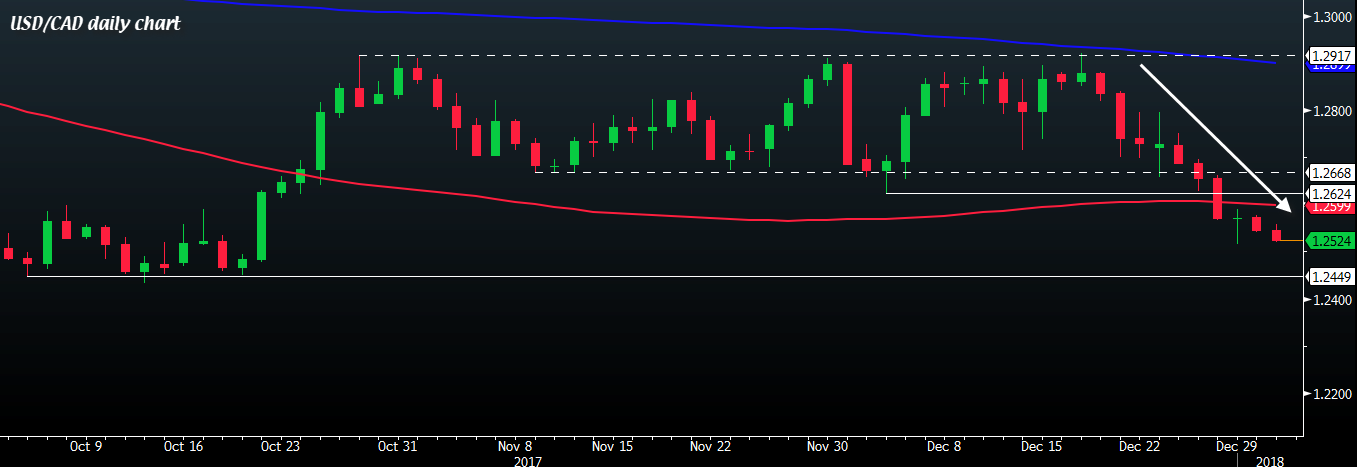The pair heads lower, with sellers eyeing for a move towards the Oct 2017 low of 1.2449
The pair is trading near session lows on the day, as commodity currencies lead the charge as we head into the European session.

The downtrend started in December after a move to the topside failed at the 1.2917 level. Stronger than expected Canadian data during the month helped to exacerbate the move downwards - and year-end dollar weakness did not provide any comfort to buyers as the pair broke away from a two-month range, and fell below the 100-day MA (red line).
Sellers are still firmly in control, as fundamentals are lining up in favour of the loonie. Oil prices hit its highest levels since 2015, as WTI crude hit a high of $60.74 moments ago - the highest since June 2015.
The daily chart does not show much support for the pair until we test near the 1.2450 level where we see the 4 October low of 1.2449 resting.
However, there are some risk factors to look out for in the coming weeks. On the agenda this month, we have Canadian employment data due out on Friday (same time as US NFP numbers), followed by the Bank of Canada meeting on 17 January, then core retail sales on 25 January, and lastly inflation data on 26 January.
The Bank of Canada decision is likely to produce a jolt of volatility - so are economic data points - as BOC governor Poloz signaled that they won't handhold the market's hand into any future rate decisions. In that regard, Canadian data points will now be keenly eyed and be interpreted as "in favour" or "unfavourable" conditions to warrant a rate hike - and that will be one of the bigger influences on the loonie in 2018 (as we have seen the impact in December's retail sales and inflation data).



